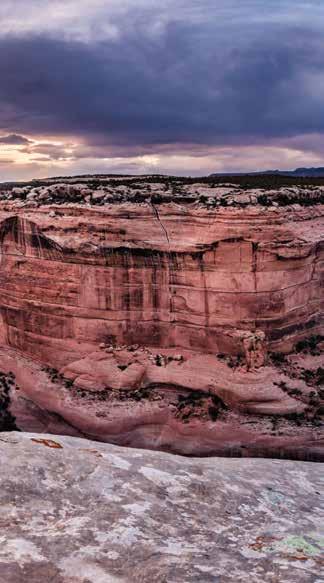
6 minute read
Explaining the wonders of the desert

The 32-year-old moved to Moab 10 years undergoing extreme change and people are KZMU Community Radio also partners with Moab ago to work for the U.S. Geological Survey as a fighting over water. Scientists talked about the Science by broadcasting recorded interviews science technician. “I got to work on the coolest overlap between the film’s storyline and the in the station’s studio each Friday at 11:30 a.m. science here, trying to understand the ecosys- increasing aridity in the Southwest. The present- Science Moab was founded in 2017 after Young tem of southeast Utah,” while collaborating with ers offered solutions and recommended actions approached the radio station about recording other scientists, she recalls. “We were doing this to take. Although Science Moab on Tap gather- interviews with local and visiting scientists. work and I came to realize that people Young no longer works for the USGS, in town did not know about the amaz- instead, she volunteers her time develing science going on here.” So, she “SCIENCE CAN BE USED TO oping and growing Science Moab, with founded Science Moab. the help of multiple volunteers. “We got
In the past, people packed Woody’s DIVERSIFY THE ECONOMY AND HELP a lot of positive feedback,” regarding the Tavern for Science Moab on Tap events where attendees could enjoy a beer US UNDERSTAND THE WORLD radio interviews, says Young, who has a Master’s degree in ecology and is curwhile listening to local scientists give WE LIVE IN.” rently working on a Ph.D. on ecology and light-hearted, non-jargon-laced pre- evolutionary biology through the Universentations about the research they — Kristina Young, sity of Texas El Paso. “It’s important that were doing in the region. The popular Tap events took place during the winter Science Moab Executive Director people have access to this knowledge. The majority of scientists in town are months of 2018-2019 and 2019-2020. coming here to do research.”
At the last Tap event in March — titled Mad ings at Woody’s are on hold for now due to the Carrie Schwartz learned about Science Moab Max Meets Science Moab, a group of dryland pandemic, Science Moab organizers hope to cre- from listening to the KZMU interviews. She says scientists talked about dust and erosion and ate safe, outdoor Tap events this winter. she then started “religiously attending” the Scihow deserts are being transformed. The presen- People can still keep up with scientific news, ence Moab on Tap events at Woody’s. One of tation included clips from the movie Mad Max, however, by reading the Moab Sun News, which her favorite presentations was by a scientist a post-apocalyptic film in which the climate is publishes a Moab Science column each week. who studies the region’s unique cryptobiotic
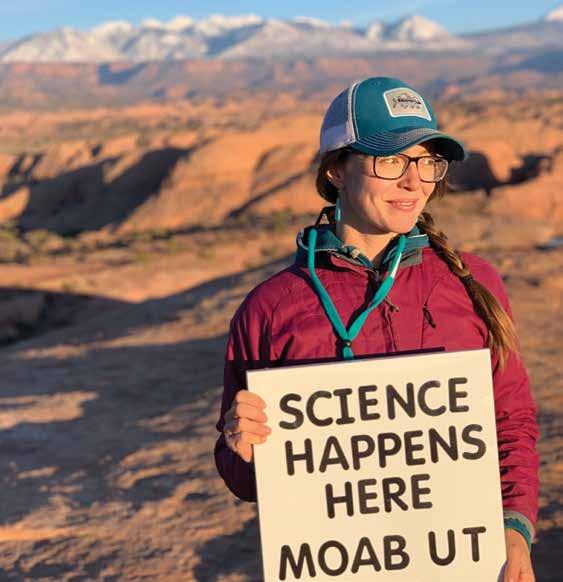
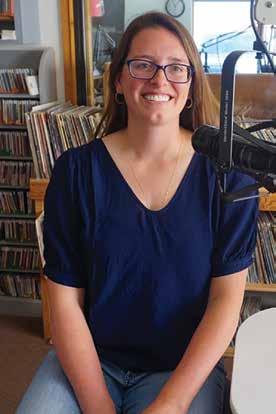
soil. “She made it relatable and exciting,” says Schwartz. “We learned more about why it’s so important and why we should protect it.”
It was during a Tap event at Woody’s that Young mentioned a need for volunteers. Schwartz answered the call. She now volunteers as treasurer of the nonprofit’s executive team.
“I work with her on the organizational culture we want to build with Science Moab,” says Schwartz who freelances as a consultant with the National Museum of Wildlife Art in Jackson, Wyoming where she worked as a staff member before moving to Moab in 2016. “I help with the strategic and financial plan. We were recently granted nonprofit status. I work for nonprofits so I have some familiarity of nonprofit culture. This is my first foray into starting one.”
Another volunteer, Peggy Hodgkins, conducts and records the radio interviews, which allows Young to focus more on fundraising and developing new programs. Hodgkins was already a DJ at KZMU and was looking to do more at the station. She’s also a scientist who worked as a geologist for 25 years. So, when station manager Serah Mead introduced Hod-
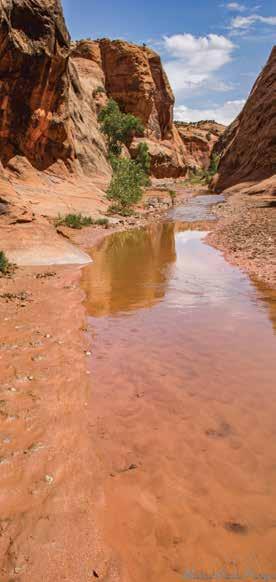
gkins to Young and the Moab Science program it was a perfect fit. “I really like it,” Hodgkins says. “I enjoy the production part of it — the editing, sound, putting together a show. And I enjoy the subject.”
She used to do the interviews in-person in the studio. Since COVID-19, interviews have taken place via Zoom or over the phone. If you miss the half-hour program you can listen anytime to a podcast of the interview, downloadable from the KZMU or Science Moab web sites.
Thus far, Hodgkins has interviewed a soil ecologist, river morphologist, bird specialists and paleontologists. She’s also talked with professors from Utah State and Northern Arizona universities, USGS employees and scientists from other federal agencies, writers, and guests of the Colorado River Symposium and Moab Festival of Science events. An interview with Utah state paleontologist Jim Kirkland was particularly “eye opening,” when he talked about dinosaur bones found north of Arches National Park, Hodgkins says. As a geologist she enjoyed learning how the area’s preponderance of dinosaur fossil findings is related to the region’s unique geology.
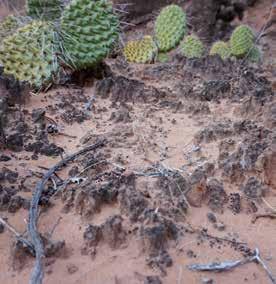
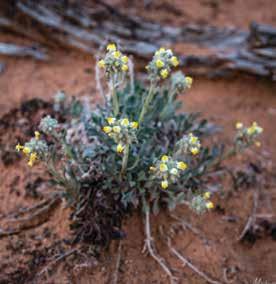

— Science Moab volunteer Peggy Hodgkins
The nonprofit is working on a new program that will offer certified science training for outdoor recreation guides in southeast Utah and the greater Colorado Plateau — programs custom-tailored for various guide companies. Outdoor guides will be able to share up-to-date information with clients about cutting-edge science happening in the area. This will allow companies to diversify their offerings and help visitors understand the region, says Young.
Science Moab is also partnering with Grand County High School’s career and technical education program to pair students with local scientists for job shadowing opportunities or short-term internships. “We’re hoping for intern matches this spring,” Young says.
Larrea Cottingham is helping out with both of those programs as well as other ideas for community outreach and partnerships. As a Moab Charter School teacher with a background in outdoor education, a bachelor’s degree in biology and a Master’s in science teaching, Cottingham is particularly excited about the Science-to-School program being developed. Students enrolled in the program will learn real skills to become competitive applicants for science-related careers, she explains. “There’s so much science in Moab with few who grew up here doing that science, or working in science careers” locally, says Cottingham. “It’s so important to get kids engaged in science in real and meaningful ways.”
Cottingham is also excited about the science certification for guide companies, describing it as an opportunity to educate the region’s large number of visitors, who impact the natural environment. “If those folks can be keyed into environmental stewardship through learning about the science happening here I think it will give visitors a deeper appreciation for the area,” says Cottingham.
“We see so much value,” in sharing the science, Young adds. “We really want the community to benefit from all the people who come here to learn. We’re providing opportunities for students and guides to be more engaged with science. Science can be used to diversify the economy and help us understand the world we live in.”
To listen to past Science Moab on Tap events or radio interview episodes visit: sciencemoab.org. n







